52nd Osho Match Game 3
[Black "Sato Yasumitsu, Osho"]
[White "Habu Yoshiharu, Challenger"]
[Event "52nd Osho-sen, Game 3"]
[Date "January 28th and 29th 2003"]
1.P7g-7f 00:00:00 00:00:00
2.P8c-8d 00:00:00 00:05:00
3.P2g-2f 00:05:00 00:05:00
4.G4a-3b 00:05:00 00:15:00
5.G6i-7h 00:06:00 00:15:00
6.P8d-8e 00:06:00 00:31:00
7.B8h-7g 00:06:00 00:31:00
8.P3c-3d 00:06:00 00:31:00
9.S7i-8h 00:06:00 00:31:00
10.B2bx7g+ 00:06:00 00:39:00
11.S8hx7g 00:06:00 00:39:00
The R8e-Yokofudori and the Gokigen-Nakabisha are followed by the
Kakugawari opening. As is often the case in matches between Habu
and Sato, there is a lot of variety in the opening strategies. Good
news for shogi fans who like to see different types of shogi.
12.S3a-4b 00:06:00 00:39:00
13.S3i-3h 00:07:00 00:39:00
14.S7a-7b 00:07:00 00:43:00
15.P9g-9f 00:09:00 00:43:00
16.P9c-9d 00:09:00 00:51:00
17.P4g-4f 00:13:00 00:51:00
18.P6c-6d 00:13:00 00:59:00
19.P1g-1f 00:20:00 00:59:00
20.P1c-1d 00:20:00 01:06:00
21.S3h-4g 00:23:00 01:06:00
22.S7b-6c 00:23:00 01:07:00
23.K5i-6h 00:26:00 01:07:00
24.G6a-5b 00:26:00 01:48:00
25.P3g-3f 00:32:00 01:48:00
26.K5a-4a 00:32:00 01:52:00
27.S4g-5f 00:44:00 01:52:00
28.S6c-5d 00:44:00 01:53:00
29.K6h-7i 00:48:00 01:53:00
30.K4a-3a 00:48:00 01:57:00
31.G4i-5h 00:53:00 01:57:00
32.P4c-4d 00:53:00 01:58:00
33.P6g-6f 00:58:00 01:58:00
34.P7c-7d 00:58:00 02:01:00
35.N2i-3g 01:00:00 02:01:00
36.N8a-7c 01:00:00 02:21:00
37.P2f-2e 01:04:00 02:21:00
38.S4b-3c 01:04:00 02:28:00
39.P4f-4e 01:48:00 02:28:00
40.P4dx4e 01:48:00 02:29:00
41.P3f-3e 01:48:00 02:29:00
42.S3c-4d 01:48:00 02:35:00
43.P2e-2d 01:54:00 02:35:00
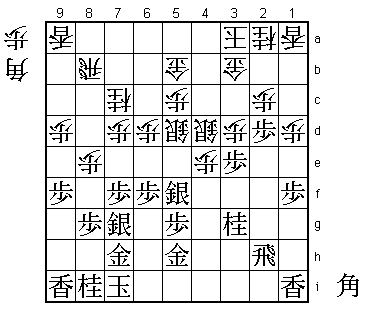
So far, this position has appeared in a large number of professional
games. The most popular line is 43.P1e Px1e P7e Px7e P2d Px2d Rx2d
P*2c R2i, where the white weakness on 7d becomes the main theme.
The results for black in this position are good, but there is no
definite conclusion about whether black objectively has the better
position. Sato has prepared a new move in an older variation.
44.P2cx2d 01:54:00 02:35:00
45.R2hx2d 01:56:00 02:35:00
46.P*2c 01:56:00 02:37:00
47.R2d-2h 01:58:00 02:37:00
48.P6d-6e 01:58:00 03:02:00
49.P6fx6e 02:09:00 03:02:00
50.P7d-7e 02:09:00 03:04:00
51.B*6d!? 03:18:00 03:04:00
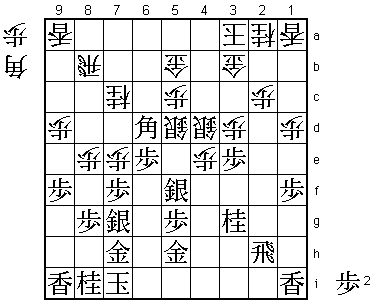
The move Sato prepared. It is almost ten years ago since the position
after 50.P7e appeared in a professional game. In the 4th game of the
1993 Kisei match between Goda and Tanigawa, Goda played 51.S6f P9e
Px9e P*9g Lx9g P8f and white won.
52.G5b-6c 03:18:00 04:45:00
It is not a surprise that Habu took a long time for his reply to
51.B6d, but 1 hour and 41 minutes is unusually long for him. This
was the sealed move, and even though he asked the keeper of the game
record (Yamamoto, 4-dan) to prepare for the sealing of the move at
18:10, it actually took him another 21 minutes to seal the move.
The problem was that he had a hard time dismissing the alternative
52.B*8d, which he considered the more natural move. However, after
53.S6f P*6c Bx7e Bx7e Sx7e Nx6e S6f B*6d B*5i, it seems white has
nothing else but P*7g Nx7g Nx7g+ Sx7g Sx3e P*6e B7c which doesn't
seem to work well for white. Habu finally decided that 52.G6c was
the better move.
53.B6dx7e 03:23:00 04:45:00
54.S5dx6e!? 03:23:00 05:19:00
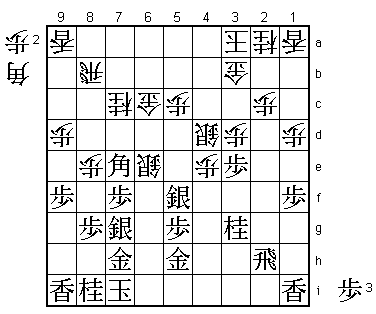
A surprise. This is not the natural move. Of course, if black plays
55.Sx6e Nx6e, white has developed the knight and exchanged a silver,
which would be very good. However, the silver on 6e blocks the knight
on 6e, so if the silver exchange is not played, it can be hard for
white to develop his pieces. Habu had looked at 54.Nx6e, but he
didn't like 55.P*2b. Then 56.Kx2b B6f gives black a good bishop
line to the white king and 56.Gx2b puts the gold on a bad square.
55.S5fx4e 06:56:00 05:19:00
Not record-breaking, but thinking for 3 hours and 33 minutes is
exceptional. In title matches, only Yonenaga once thought longer
(217 minutes) about his move in the 3rd game of the 34th Osho
match (1985) against Nakahara. The record for a non-title match
game belongs to Kanezawa, who once thought 286 minutes in a game
for the Oi title against Yashiki in 2001. In light of the previous
comment, moving the silver away from the exchange, seems to be the
most natural move.
56.S4dx4e 06:56:00 05:48:00
57.N3gx4e 06:56:00 05:48:00
58.S*4d 06:56:00 06:20:00
59.P*2d 07:09:00 06:20:00
60.P2cx2d 07:09:00 06:35:00
61.P*6d? 07:30:00 06:35:00
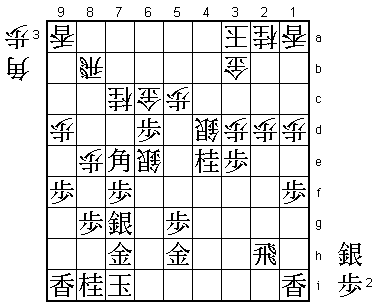
The only real mistake in this game, but unfortunately for Sato a
game-ending one. He should have played 61.P*2c here. For example,
62.Gx2c P*2e Px2e S*6d G7d Sx7c+ Gx7c N*3f Sx4e Bx5c+ S*4b +B7a
R8d +B6b and it is hard for white to defend against +Bx7c. Sato
had seen this, but he feared 62.Sx4e S*6d Gx6d Bx6d N*6a!. This
is a very Sato-like move, but Habu didn't like it much. Habu said
after the game that he would not have played it like that.
62.G6c-7d 07:30:00 06:36:00
63.B7e-9g 07:40:00 06:36:00
64.P8e-8f 07:40:00 06:47:00
65.B9gx8f 07:40:00 06:47:00
66.B*5e! 07:40:00 06:49:00
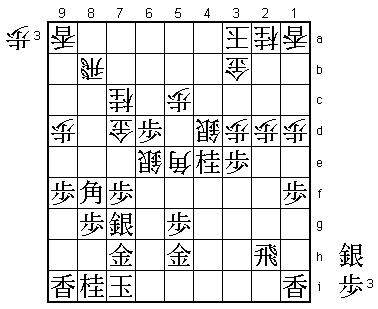
Now white suddenly has a big advantage.
67.R2h-4h 07:41:00 06:49:00
68.P*4g 07:41:00 07:10:00
69.R4hx4g 07:41:00 07:10:00
70.P*4f 07:41:00 07:10:00
71.R4g-2g 07:42:00 07:10:00
72.G7d-8e 07:42:00 07:18:00
73.P6d-6c+ 07:44:00 07:18:00
74.G8ex8f 07:44:00 07:18:00
75.P8gx8f 07:49:00 07:18:00
76.B*3f 07:49:00 07:19:00
Game over. Sato tries a desperate attack, but he needs too much
material to fuel this attack and Habu wins easily in the counter-attack.
77.+P6cx7c 07:49:00 07:19:00
78.B5ex7c 07:49:00 07:24:00
79.R2gx2d 07:52:00 07:24:00
80.P*2c 07:52:00 07:27:00
81.N*4c 07:58:00 07:27:00
82.K3a-2b 07:58:00 07:31:00
83.S*3a 07:58:00 07:31:00
84.G3bx3a 07:58:00 07:42:00
85.R2dx3d 07:58:00 07:42:00
86.G3a-3b 07:58:00 07:42:00
87.P*2d 07:58:00 07:42:00
88.S*3c 07:58:00 07:44:00
89.N4ex3c+ 07:58:00 07:44:00
90.S4dx3c 07:58:00 07:44:00
91.S*4d 07:59:00 07:44:00
92.S3cx3d 07:59:00 07:48:00
93.P3ex3d 07:59:00 07:48:00
94.B3fx5h+ 07:59:00 07:51:00
95.P2dx2c+ 07:59:00 07:51:00
96.G3bx2c 07:59:00 07:51:00
97.P*2d 07:59:00 07:51:00
98.R*3i 07:59:00 07:52:00
99.K7i-8h 07:59:00 07:52:00
100.G2cx2d 07:59:00 07:52:00
101.S*3e 07:59:00 07:52:00
102.N*6f 07:59:00 07:55:00
103.S3ex2d 07:59:00 07:55:00
104.N6fx7h+ 07:59:00 07:55:00
105.K8hx7h 07:59:00 07:55:00
106.+B5h-6i 07:59:00 07:55:00
Resigns 07:59:00 07:55:00
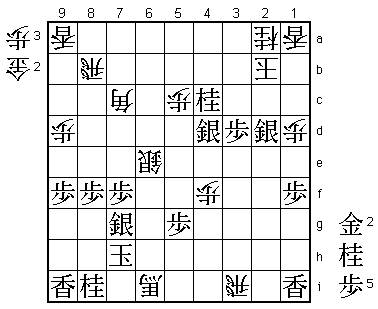
Simple mate after 107.K8h G*8g or 107.K6g G*6h Sx6h G*6f. This game
has the same pattern as the first two games: Sato plays the opening
well and he gets his opening preparation on the board. After that,
Habu finds a way to complicate the position and Sato makes a mistake
that loses the game. A Sato in good form would be able to carry his
opening preparation advantage over the finish line, but that is not
happening in this match. Three down with four to play is quite a
desperate situation and Habu seems to be taking back the Osho title
he lost last year. The question is: will he do it in Oyama style?
The late Oyama was well-known for getting very angry (in a positive way)
at players who took a title from him, usually thrashing them 3-0 or
4-0 in a return match. Game 4 will tell us if Habu has the same
mercilessness.





